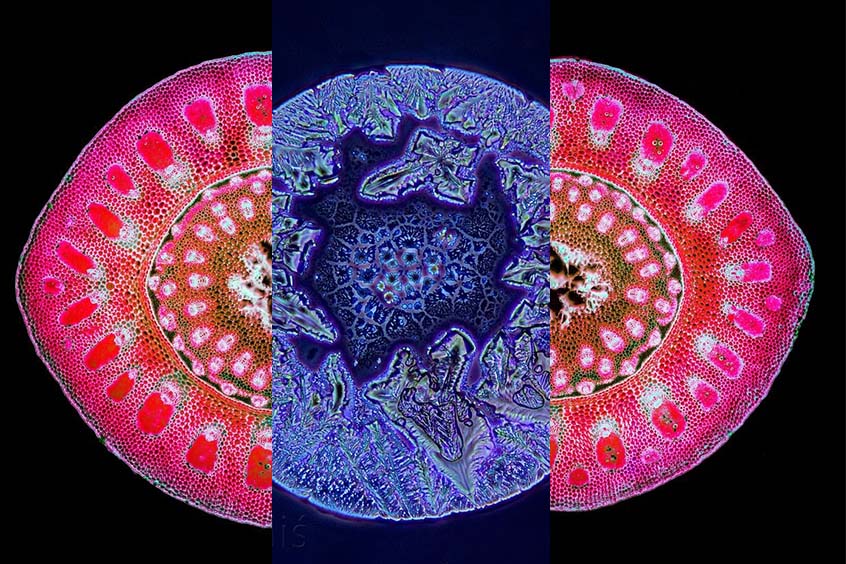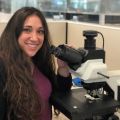While the arrival of fall brings cooler temperatures, our top images for September make us wish it was still swimming season! Many of the magnificent microorganisms in these images were found from local ponds and other bodies of water.
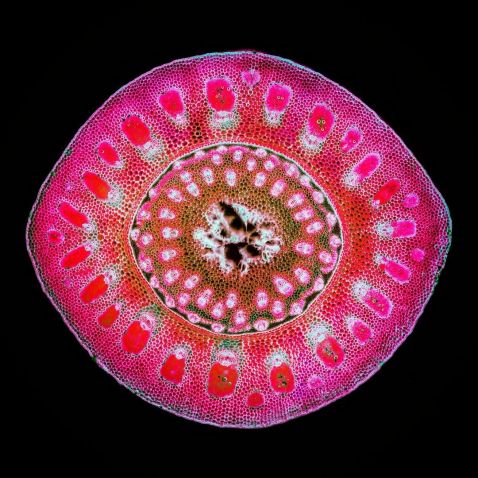
We find it fitting that what looks like a cat’s eye is actually a cross-section of Dactylis, also known as cat grass! Native to North Africa, this member of the bluegrass family is considered invasive and can be found throughout the world.
Image courtesy of Jan Martinek. Captured using an Olympus AX70 microscope. Fun fact: Jan is the global winner of the 2021 Evident Image of the Year competition. Check out his interview and winning image.
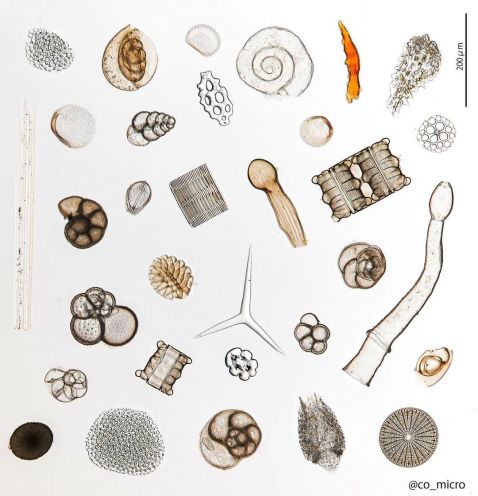
This arrangement slide was created by the microscopist using samples from Sagami Bay, Japan. It’s a stunning collection of our favorite tiny treasures, featuring diatoms, foraminifera, sponge spicules, sea cucumber spicules, soft coral spicules, seashells, and more.
Image courtesy of @co_micro. Captured using an Olympus BH2 microscope.
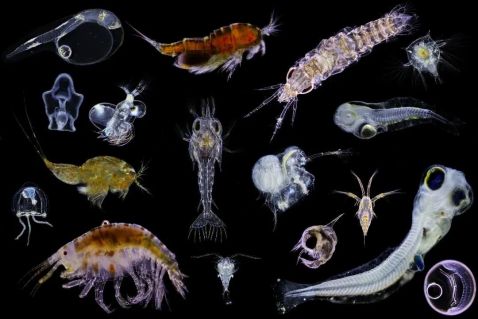
And here we have another stunning collection of our microscopic friends!
“In this composition, you can see some of the best images I took using my new 10X objective. You can see microorganisms belonging to zooplankton, from copepods to fish eggs. I found them using a plankton net under the water while swimming! I used an Olympus 10X UplanApo objective, which gives me a more corrected image. Apochromatic correction is the highest one. The objective has also a high numerical aperture, or NA, which means that the objective can obtain more details from what you
are observing. The NA is the ability of an objective to gather light. The higher the NA is, the higher resolution you can achieve.”
Image and caption courtesy of Luigi Bozzano. Captured with an Olympus 10X UplanApo objective.
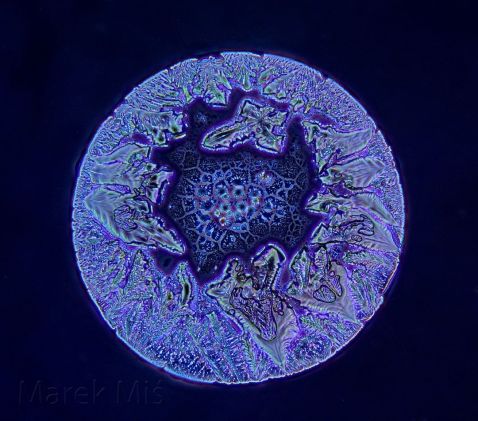
Is it a blueberry? You may be surprised to learn that the blue sample shown here is actually a crystallized drop of soy sauce.
Image courtesy of Marek Miś, Captured using an Olympus BH2 microscope at 200X magnification.
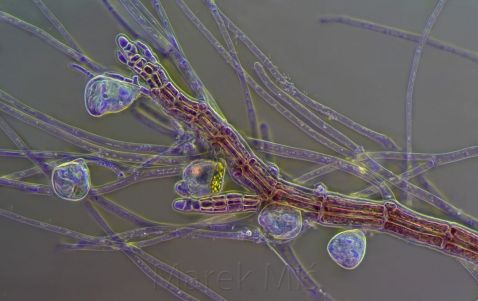
The bell-shaped organisms pictured here are Vorticella, which were first described by Antonie van Leeuwenhoek in a letter dated October 9, 1676. A genus of ciliates that have stalks to attach themselves to substrates, these Vorticella shown here have settled on red alga. This image was captured using slightly modified polarized light.
Image courtesy of Marek Miś, Captured using an Olympus BH2 microscope at 200X magnification.
Bonus video! Dive into these clips of microscopic creatures found in a lake.
"Clip 1 and 2 shows a dinoflagellate, a type of phytoplankton, swimming gracefully! Dinoflagellates are microscopic algae that feed on sunlight by photosynthesis. Many of them are marine, but there are a couple of species living in freshwater!
Clip 3 shows an amoeba filled with green algae. Amoebae are known to establish symbiotic relationships with bacteria, but some do the same with green algae. Many organisms can establish such relationships, like ciliates, hydra, rotifers, and flatworms! The algae synthesize sugar by photosynthesis, and part of it is transferred to the amoeba in exchange for a well-suited habitat and protection against predators and pathogens!
In clip 4, you can observe colonial diatoms, another type of phytoplankton, named Tabellaria! The individuals are attached together by the corner of their glass-made shells, so they form a zigzag pattern. Diatoms are also photosynthetic. In fact, most of the air you breathe was produced by diatoms!
In clip 5, you can see a colonial green alga called Pediastrum. These algae are commonly found in freshwater environments such as ponds, lakes, and slow-moving streams. Pediastrum colonies are characterized by their star-shaped appearance. This is a result of individual cells arranged in a single layer around a central point, forming a radial symmetry!
Clip 7 shows a water mite. Unlike spiders, their close relatives, mites found ways to colonize under water habitats. There are thousands of aquatic mite species, mostly living in freshwater springs, streams, lakes, and temporary pools.
In clip 8, you can see Paramecium bursaria, a fluffy single cell that shelters thousands of green algae named Chlorella. They are in a symbiotic relationship; just as the amoeba from the third clip!
The last clip shows a unicellular alga named Euglena mutabilis! This alga can be found around the globe, especially in acidic environments like volcanic lakes, acid mine drainage, and peat bogs. Unlike their euglenoid cousin, it doesn’t have a flagellum to help it swim around. Instead, it moves by contractions and glides toward a light source where it can accomplish photosynthesis."
Video and caption courtesy of Chloé Savard. Captured using an Olympus BX53 microscope.
To see more images like these, be sure to follow us on Instagram at @evidentlifescience!
Want to share your own images? Visit our image submission site.
Related Content
Breadth of Beauty—Our Most Popular Microscope Images for August 2023
Stars of the Show—Our Most Popular Microscope Images for July 2023
Easy Being Green—Our Most Popular Microscope Images for June 2023
